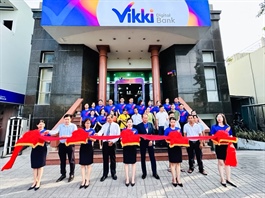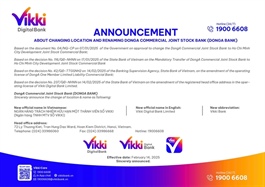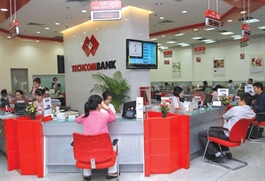Payment habits now moving towards more efficient means
Payment habits now moving towards more efficient means
AI has become increasingly popular in the banking industry. Tim Evans, CEO of HSBC Vietnam, talked with VIR’s Hong Dung about how AI will drive banks forward.
Thanks to swift changes in the economy and new tech trends, the banking industry in 2025 will unlock more opportunities but also face issues with consumer power, deposits, revenues, credit quality, and risk management. How do you think technology can support the industry in facing these challenges?

Tim Evans, CEO of HSBC Vietnam |
Technology is present in all aspects of the banking industry, not only in operations, but also helps lenders know more about their existing and prospect customers, anticipate opportunities, and capture them when they come. Therefore, the factors you mentioned can be considered opportunities rather than challenges. Thanks to the fast-growing development of technology, banks can communicate with customers through power natural language models applied in virtual assistants, providing more updated information in a convenient way.
From end users’ perspective, internet banking has achieved a big jump. Young Vietnamese tend to use digital platforms in payments, transfers, and deposits, etc. According to the State Bank of Vietnam (SBV), some lenders process more than 95 per cent of their transactions on digital platforms. Cashless payments have been continuously increasing in both volumes and values.
Currently, all of our corporate customers transact online, while we record a majority of retail customers prioritising internet banking and apps. Technology helps lenders keep up with the market’s needs and preferences, resulting in more business opportunities and revenues. AI is an effective assistant in credit quality and risk management. As early adopters of new technology, banks use AI to produce synthetic data to train models behind e-verification processes, making them more efficient.
Research indicates that AI could boost banking revenue worldwide by up to 9 per cent in 2025, reaching $2 trillion in 2028. How does this pertain to Vietnam?
AI is the key word in recent years, and especially after the launch of DeepSeek, the outlook in which AI is more affordable for everyone seems more realistic. Vietnam owns advantages for AI development, such as a tech-savvy population that is curious and willing to welcome innovations. The government has big ambitions for technology transformation too.
However, statistics from the National Cyber Security Centre’s portal for security reporting recorded 16,000 reports of online fraud cases, causing a loss of $15.6 billion – an equivalence of 3.6 per cent of GDP, with 91 per cent related to fraud in the banking and finance sector. This vulnerability of customers to fraud is partly attributed to data breaches and cybersecurity threats targeting financial organisations, potentially resulting in customer data falling into the wrong hands.
This raises concerns about data privacy and the ethical and responsible management of AI, since it collects and analyses huge amounts of customer data daily. What would happen if this information was leaked and used for bad intentions? To address these challenges, banks commit to transparency in data collection, processing, and sharing practices, ensuring that the purpose and process are transparent.
All data collection activities serve a one-and-only purpose: providing customers with tailored solutions that meet their needs best. It is imperative for financial institutions to establish a robust personal data retention and security system alongside data privacy control systems and risk management frameworks to safeguard customer data effectively. In the long term, investing appropriately in privacy-enhancing technology will be key to protecting against potential threats in the future.
According to Vietnam’s cashless payment strategy, by the end of 2025 its value will be 25 times higher than GDP. In your opinion, how AI assist in this process?
That requires the collective and long-term efforts that I believe banks in Vietnam have been striving for through the years. We have achieved a big forward step to transform how people transact daily. In the first 11 months of 2024, cashless payment transactions increased by 56.86 per cent in volumes and 33.73 per cent in values, according to the SBV.
To keep that momentum, banks continue to upgrade their digital services, creating seamless, secure and convenient methods for customers. As mentioned, technology and AI are good factors that contribute to this breakthrough journey. Cooperation and best practice sharing between banks in applying AI, developing digital services will turn to bigger benefits for our customers.
Vietnamese people still often withdraw much cash at year-end, for their Lunar New Year spending. Do you think this habit will gradually change with electronic lucky money, for example?
This is the sixth year I have lived and worked in Vietnam, which has helped me witness some of the beautiful Vietnamese traditions during Lunar New Year. People tend to send money to their families or parents before the holiday break, and the elderly also sometimes give lucky money to children in red envelopes as best wishes for the New Year. I think this tradition will live on.
Nevertheless, thanks to the effects of Vietnam’s financial inclusion in recent years, people now prefer to make transactions online. Transactions through the National Payment Corporation of Vietnam in early 2025 increased 13-15 per cent on-year. The local media also stated reduced numbers of people withdrawing cash at ATMs before Tet as previous years. Vietnamese people’s habits are changing.

























